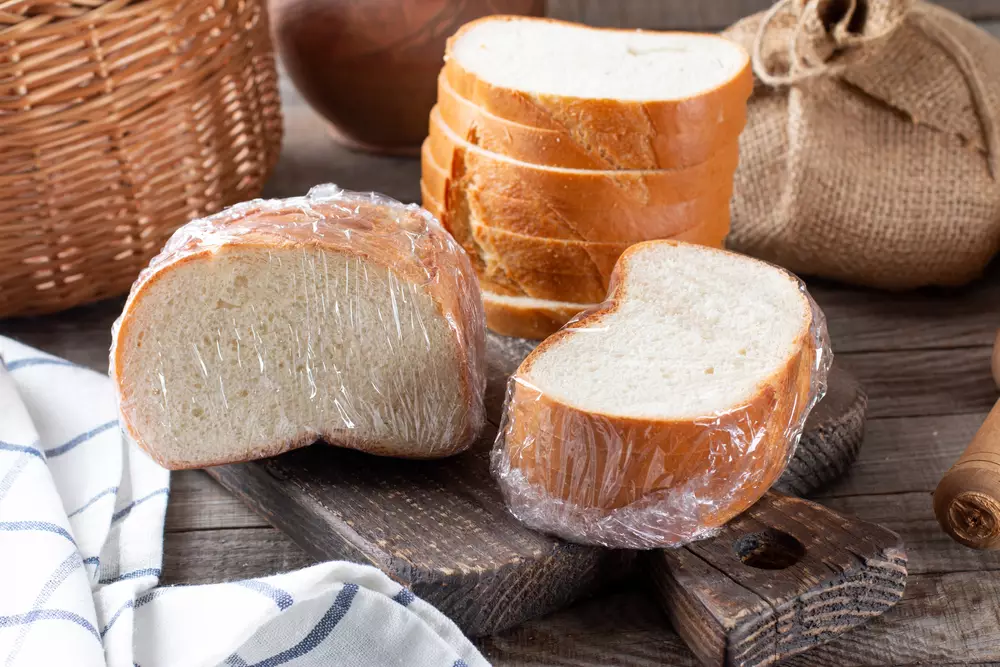How to Thaw Frozen Bread Dough? Thawing frozen bread dough is an essential skill for any home chef. Whether you forgot to take the dough out of the freezer the night ahead or you simply prefer to make the dough in bulk, properly thawing frozen bread dough can mean the difference between a perfect loaf and a disappointing one.
In this blog, we’ll explore the smartest practices for thawing frozen bread dough quickly and safely, as well as share expert tips and tricks to insure your dough rises evenly and bakes up perfectly every time. So whether you are a seasoned baker or a novice in the kitchen, read on to learn how to thaw firmed chuck dough like a pro.
Understanding the Different Types of Frozen Bread Dough
When it comes to frozen bread dough, there are various types available in the market, each with its unique characteristics and uses. Here are some of the most common types of frozen bread dough:
- Loaves: Frozen bread dough loaves are pre-shaped and usually come in standard sizes. These loaves are ideal for making bread, buns, or rolls. You can either let the dough rise before baking, or you can bake it straight from the freezer.
- Rolls: Frozen bread dough rolls are smaller than loaves and come in different shapes and sizes. They are perfect for making dinner rolls, hamburger buns, or any other small bread item.
- Pizza Dough: Pizza dough is a type of frozen bread dough that is specifically designed for making pizza. It usually comes in a round or rectangular shape and can be easily stretched or rolled out to fit any type of pizza pan.
- Artisanal Dough: Artisanal bread dough is usually made from high-quality ingredients and requires a more delicate touch. This type of dough is perfect for making specialty bread like ciabatta, focaccia, or sourdough.
- Sweet Dough: Sweet dough is a type of bread dough that is made with added sugar and often flavored with spices like cinnamon or nutmeg. This dough is perfect for making sweet bread like cinnamon rolls or raisin bread.
- Whole Wheat Dough: Whole wheat bread dough is made from whole wheat flour instead of regular flour. It is higher in fiber and more nutritious than regular bread dough, making it an excellent choice for health-conscious individuals.

Tips and Tricks for Thawing Frozen Bread Dough Quickly and Efficiently
Thawing frozen bread dough can be a time-consuming process, especially if you’re in a hurry. How to thaw frozen bread dough quickly? Here are some tips and tricks for thawing frozen bread dough quickly and efficiently:
- Use a Microwave: If you’re in a rush, you can quickly thaw frozen bread dough in the microwave. Place the frozen dough in a microwave-safe bowl and microwave it for 15–30 seconds on low power. Repeat the process until the dough is thawed properly.
- Use a Warm Oven: Another quick thawing method is to use a warm oven. Preheat your oven to the lowest setting, and turn it off. Place the frozen dough in the warm oven for 15–20 minutes, or until it is thawed.
- Use a Bread Proofer: A bread proofer is a handy tool that can be used to quickly thaw frozen bread dough. Simply place the frozen dough in the bread proofer and set it to the appropriate temperature. The dough will thaw and rise in no time.
- Thaw in the Fridge: Thawing frozen bread dough in the refrigerator is the safest method and ensures even thawing. Place the dough in a covered bowl or plastic wrap and put it in the fridge. Depending on the size of the dough, it may take several hours to thaw completely.
- Don’t Rush the Process: While it’s important to thaw frozen bread dough quickly, it’s equally important not to rush the process. Thawing the dough too quickly can result in uneven thawing, which can affect the texture of the bread.
Preparing and Baking Thawed Bread Dough: Tips for Perfectly Baked Bread
Preparing and baking thawed bread dough can be a delicate process that requires attention to detail. Here are some tips for perfectly baked bread:
- Let the Dough Rise: Once the dough is thawed, allow it to rise at room temperature until it has doubled in size. This can take anywhere from 1-2 hours, depending on the dough and room temperature.
- Preheat the Oven: Preheat your oven to the recommended temperature listed on the dough packaging. It’s essential to give your oven enough time to reach the desired temperature before placing the dough inside.
- Score the Dough: Before placing the dough in the oven, make a few shallow cuts or scores on the top of the dough. This allows the dough to expand properly during baking and can prevent it from cracking.
- Add Steam: Adding steam to the oven during the first few minutes of baking can help create a crisp crust on the bread. You can do this by placing a pan of hot water in the bottom of the oven or using a spray bottle to mist the dough with water.
- Use an Oven Thermometer: Make sure your oven is at the correct temperature by using an oven thermometer. This can help ensure that your bread bakes evenly and doesn’t burn.
- Check the Bread for Doneness: Use a food thermometer to check the internal temperature of the bread. For most bread, the internal temperature should be between 190-210°F. If the bread is not done, continue baking in five-minute increments until it reaches the desired temperature.

Get Perfectly Thawed Bread Dough Every Time with These Expert Techniques
Thawing frozen bread dough can be a tricky process, but with these expert techniques, you can get perfectly thawed dough every time:
- Plan ahead: The best way to thaw bread dough is to plan ahead and let it thaw slowly in the refrigerator. Place the frozen dough in a covered container or wrapped in plastic wrap and let it thaw overnight. This slow thawing will ensure that the dough remains at a safe temperature and doesn’t overproof.
- Keep an eye on the dough: When thawing bread dough, it’s important to keep an eye on it to prevent over-proofing. If the dough starts to rise too much, punch it down and reshape it. You can also cover it with plastic wrap to prevent it from drying out.
- Use a warm spot: If you want to speed up the thawing process, you can place the wrapped dough in a warm, draft-free area like a turned-off oven or a sunny spot in your kitchen. This method can take only a few hours, but it requires careful monitoring to prevent over-proofing.
- Avoid the microwave: While it’s tempting to use the microwave to thaw bread dough quickly, it’s not the best method. The microwave can cause the dough to cook or become rubbery, so it’s best to avoid this technique.
- Use cold water: If you’re in a hurry and need to thaw bread dough quickly, you can use cold water. Submerge the wrapped dough in a bowl of cold water and change the water every 30 minutes until the dough is thawed. This method is faster than the fridge, but it requires more attention to keep the water cold and prevent the dough from over proofing.
By using these expert techniques, you can get perfectly thawed bread dough every time and create delicious homemade bread.
Avoiding Common Thawing Mistakes: What to Do and What to Avoid
Thawing frozen bread dough is an essential step in making delicious bread, but it’s also easy to make mistakes that can affect the quality of the dough.
Here are some common thawing mistakes to avoid:
- Thawing at Room Temperature: Thawing frozen bread dough at room temperature can be tempting, but it can also cause the dough to thaw unevenly. The outer layer of the dough may thaw quickly, while the inside remains frozen. This can affect the texture of the bread.
- Using Hot Water: Using hot water to thaw frozen bread dough can also be tempting, but it can cause the dough to thaw too quickly and unevenly. This can affect the texture and rise of the bread.
- Thawing in the Microwave on High Power: While the microwave can be a convenient tool for thawing frozen bread dough, using high power can cause the dough to thaw unevenly and may even start to cook it.
- Not Covering the Dough: Not covering the dough while it thaws can cause it to dry out and form a tough crust. This can affect the texture and rise of the bread.
- Thawing for Too Long: Thawing frozen bread dough for too long can cause it to become soggy and affect its ability to rise. It’s essential to follow the manufacturer’s instructions for thawing times.
- Refreezing Thawed Dough: Refreezing thawed bread dough is not recommended, as it can cause the dough to lose its quality and freshness.
Conclusion
Thawing frozen bread dough can seem like a daunting task, but it’s actually quite simple. The key is to plan ahead and give the dough enough time to thaw and rise properly. There are a few different methods you can use, depending on how much time you have and what tools you have available.
So, how to thaw frozen bread dough? Whether you choose to thaw the dough in the refrigerator overnight, in a warm oven, or in a microwave, it’s important to follow the proper steps to ensure the best possible outcome. With a little patience and attention to detail, you’ll be able to transform your frozen dough into a delicious and freshly baked loaf of bread. So go ahead and give it a try!
